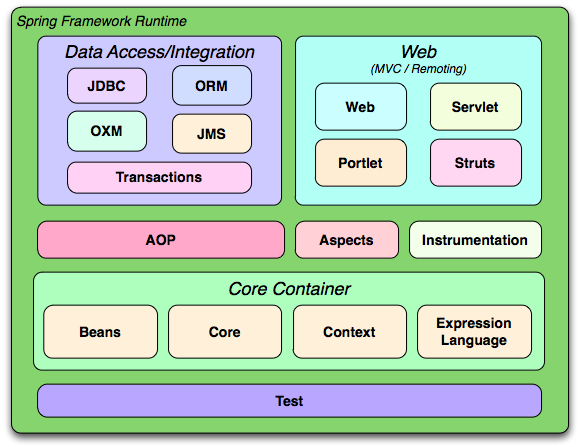What is Spring Framework?
The Spring Framework is an open source application framework and inversion of control container for the Java platform. The framework's core features can be used by any Java application, but there are extensions for building web applications on top of the Java EE platform.
Spring enables you to build applications from "plain old Java objects" (POJOs) and to apply enterprise services non-invasively to POJOs. This capability applies to the Java SE programming model and to full and partial Java EE.
The Spring Framework consists of features organized into about 20 modules. These modules are grouped into Core Container, Data Access/Integration, Web, AOP (Aspect Oriented Programming), Instrumentation, and Test

Benefits for Spring Framework
1)Spring enables developers to develop enterprise-class applications using POJOs.
2)Spring is organized in a modular fashion.
3)Spring does not reinvent the wheel instead, it truly makes use of some of the existing technologies like several ORM frameworks, logging frameworks, JEE, Quartz and JDK timers, other view technologies.
4)Testing an application written with Spring is simple because environment-dependent code is moved into this framework.
5)Spring's web framework is a well-designed web MVC framework, which provides a great alternative to web frameworks such as Struts or other over engineered or less popular web frameworks.
6)Spring provides a convenient API to translate technology-specific exceptions (thrown by JDBC, Hibernate, or JDO, for example) into consistent, unchecked exceptions.
Video for Spring Framework
https://www.youtube.com/watch?v=Jjp_EYEn4bc





